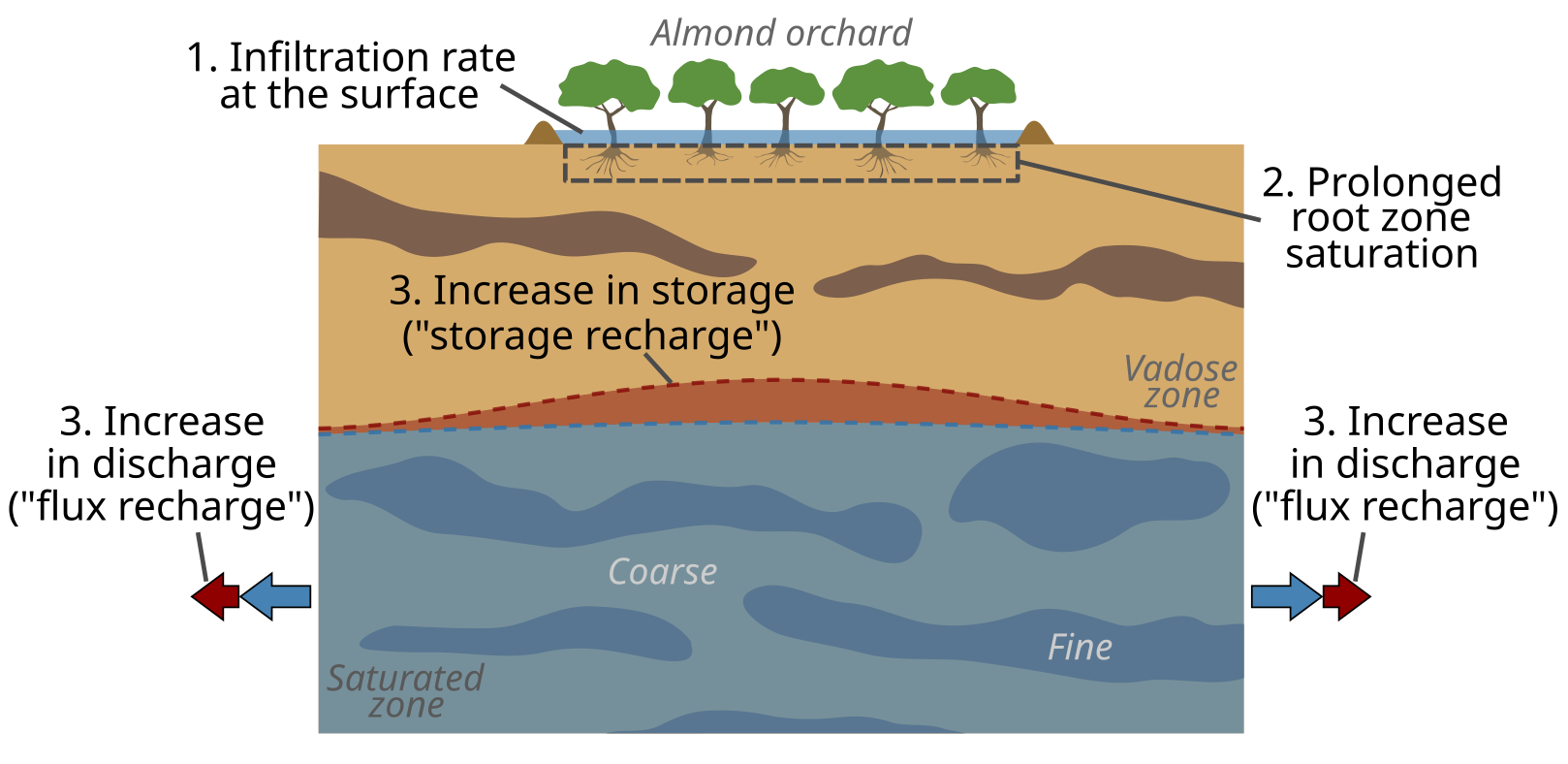This website uses cookies so that we can provide you with the best user experience possible. Cookie information is stored in your browser and performs functions such as recognising you when you return to our website and helping our team to understand which sections of the website you find most interesting and useful.
Flooding rice fields in Yuba County with groundwater (DWR, 2009).
Controls on flood managed aquifer recharge through a heterogeneous vadose zone: hydrologic modeling at a site characterized with surface geophysics
In water-stressed regions of the world, managed aquifer recharge (MAR), the process of intentionally recharging depleted aquifers, is an essential tool for combating groundwater depletion. Many groundwater-dependent regions, including the Central Valley in California, USA, are underlain by thick unsaturated zones (ca. 10 to 40 m thick), nested within complex valley-fill deposits that can hinder or facilitate recharge. Within the saturated zone, interconnected deposits of coarse-grained material (sands and gravel) can act as preferential recharge pathways, while fine-textured facies (silts and clays) accommodate the majority of the long-term increase in aquifer storage. However, this relationship is more complex within the vadose zone. Coarse facies can act as capillary barriers that restrict flow, and contrasts in matric potential can draw water from coarse-grained flow paths into fine-grained, low-permeability zones.
To determine the impact of unsaturated-zone stratigraphic heterogeneity on MAR effectiveness, we simulate recharge at a Central Valley almond orchard surveyed with a towed transient electromagnetic system. First, we identified three outcomes of interest for MAR sites: infiltration rate at the surface, residence time of water in the root zone and saturated-zone recharge efficiency, which is defined as the increase in saturated-zone storage induced by MAR. Next, we developed a geostatistical approach for parameterizing a 3D variably saturated groundwater flow model using geophysical data. We use the resulting workflow to evaluate the three
outcomes of interest and perform Monte Carlo simulations to quantify their uncertainty as a function of model input parameters and spatial uncertainty. Model results show that coarse-grained facies accommodate rapid infiltration rates
and that contiguous blocks of fine-grained sediments within the root zone are > 20 % likely to remain saturated longer than almond trees can tolerate. Simulations also reveal that capillary-driven flow draws recharge water into unsaturated,
fine-grained sediments, limiting saturated-zone recharge efficiency. Two years after inundation, fine-grained facies within the vadose zone retain an average of 37 % of recharge water across all simulations, where it is inaccessible to either plants
or pumping wells. Global sensitivity analyses demonstrate that each outcome of interest is most sensitive to parameters that describe the fine facies, implying that future work to reduce MAR uncertainty should focus on characterizing
fine-grained sediments.
- Hydrology Observation and Prediction
- Recharge and Extraction Methods and Measurement
- Soils, Geology, and Aquifer Characterization
- Tool and Application Development
Copyright 2022-Present, Flood-MAR and Contributing Authors.


